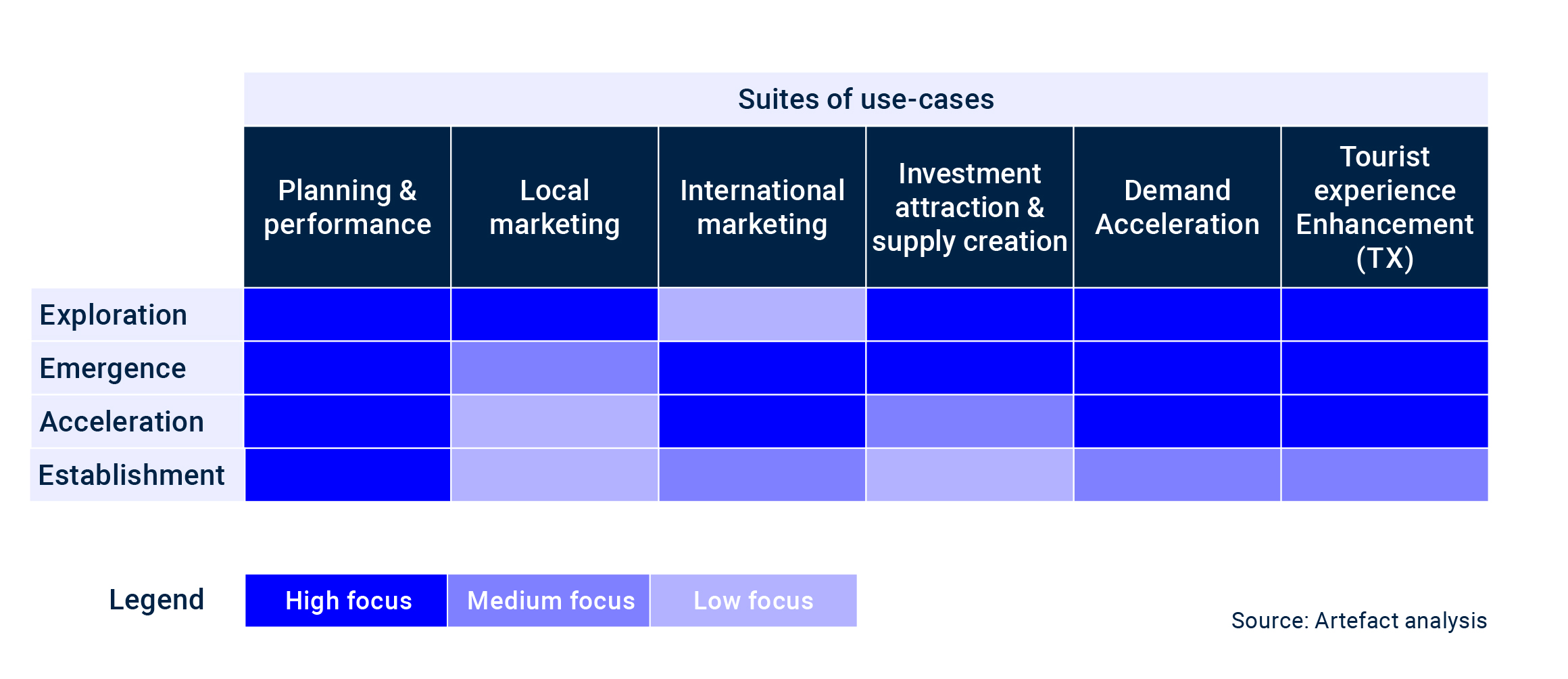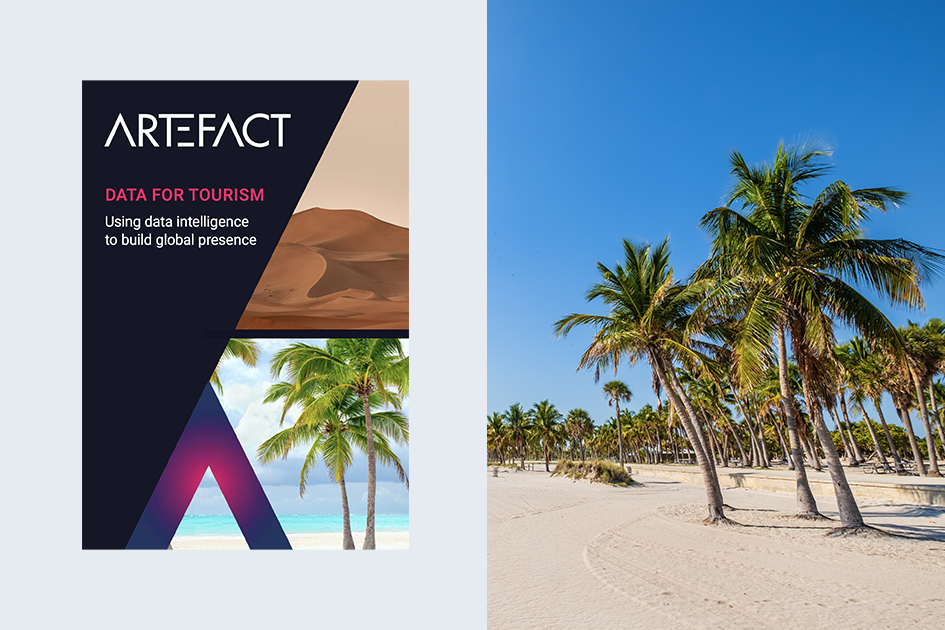Este artículo forma parte de nuestro eBook Artefact Data for Tourism.

En primer lugar, las oficinas de turismo o las autoridades del destino deben saber en qué fase se encuentra el destino y comprender los imperativos estratégicos necesarios para pasar a la siguiente fase. A continuación, deben identificar los casos de uso de data necesarios para abordar cada imperativo estratégico y seleccionar qué casos de uso de data priorizar para cada fase, tal y como se indica en el gráfico anterior.
1 - Planificación y rendimiento
Los casos de uso de la analítica de Data deben aplicarse para supervisar el rendimiento del destino, identificar las causas profundas del bajo rendimiento o las oportunidades de crecimiento, y establecer los objetivos adecuados. Por supuesto, la planificación y el rendimiento pueden empezar de forma descriptiva y luego evolucionar a predictiva y prescriptiva a medida que evoluciona la madurez de data del destino. Una tendencia clave en este ámbito es la generación automatizada de información, que ahorra recursos y tiempo a la hora de captar las causas profundas del rendimiento.
2 - Marketing local e internacional
Los casos de uso deben centrarse en el seguimiento de la marca del destino en cada mercado de origen, así como en la evaluación del rendimiento de las campañas de marketing digital. En las primeras etapas, es de vital importancia crear conciencia y aumentar la consideración de los visitantes nacionales (es decir, el marketing local). La población local será la primera defensora/promotora del destino. Se necesitará una combinación de casos de uso de conocimiento de marca, rendimiento de sitios web/aplicaciones y rendimiento de campañas para realizar un seguimiento de la eficacia en todo el embudo de marketing. Los casos de uso de data marketing internacional son de gran importancia a medida que aumenta la madurez del destino, tras establecer la conectividad con los mercados de origen internacionales.
3 - Atracción y oferta de inversiones turísticas
Los casos de uso deben permitir a los socios turísticos colaborar entre sí y con las entidades gubernamentales para aumentar el número de visitantes y el gasto, crear paquetes personalizados y mejorar la experiencia del cliente, así como supervisar el rendimiento de las iniciativas turísticas y las inversiones existentes en toda la oferta del destino. Garantizar que el destino dispone de servicios turísticos suficientes y de calidad es crucial desde las primeras fases. Los destinos emergentes pueden crear casos de uso de data que les ayuden a hacer un seguimiento de los servicios disponibles, localizar oportunidades o lagunas por cubrir, como nuevos niveles hoteleros o nuevas experiencias que ofrecer, especialmente en comparación con un punto de referencia. Del mismo modo, los casos de uso que identifican las oportunidades de inversión y el seguimiento del retorno de la inversión deben desplegarse desde el principio para acelerar el desarrollo del destino, proporcionando información tangible a los posibles inversores y fomentando su confianza.
4 - Impulso de la demanda turística
Los casos de uso deben desplegarse para garantizar un nivel suficiente de demanda que asegure una masa crítica por encima de la visitación orgánica. El establecimiento de asociaciones comerciales que ayuden a impulsar la demanda desde diferentes mercados de origen, con operadores turísticos y agregadores en línea, por ejemplo, debe ser una prioridad desde el primer día. En las primeras fases, la atención se centrará en el seguimiento de la cartera de socios; posteriormente, la atención se centrará en el rendimiento de estos socios comerciales y su contribución al volumen de visitantes y al gasto.
5 - Mejora de la experiencia turística
Los casos de uso evalúan la preparación y la satisfacción de los visitantes de los destinos turísticos y ponen de relieve los cuellos de botella en los recorridos de los visitantes. Es crucial hacer un seguimiento y mejorar la experiencia del turista desde el principio, para satisfacer las primeras expectativas de los visitantes y aprovechar su potencial de promoción. Métricas como la puntuación neta del promotor y la satisfacción y la preparación de las infraestructuras deben ser objeto de seguimiento, evaluación y actuación en colaboración con los agentes del ecosistema (por ejemplo, otras entidades gubernamentales).
ARTEFACT COLABORADORES:
Anthony Cassab, Anthony Hanna, Hemanth Mandava, Faisal Najmuddin y Andrei Dogaru

 BLOG
BLOG







